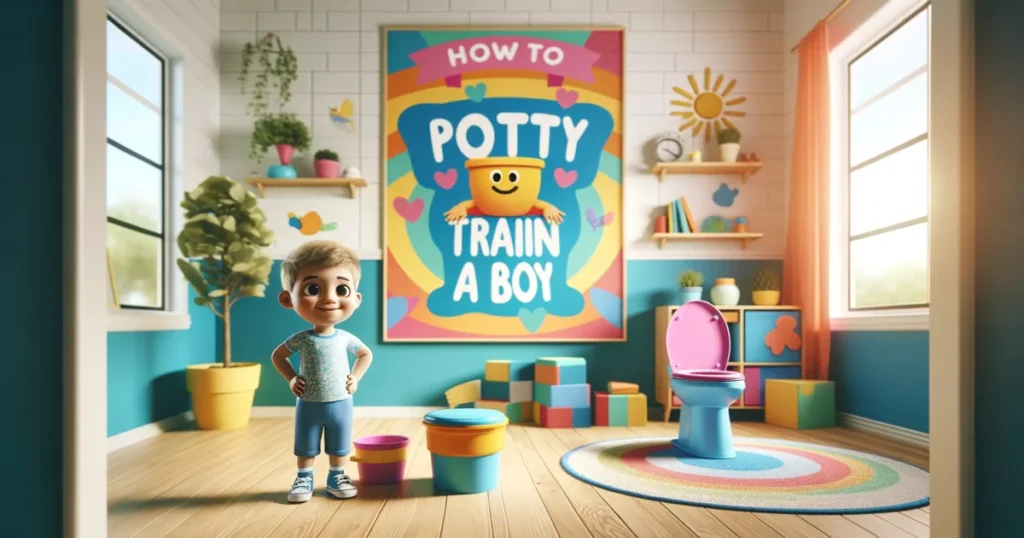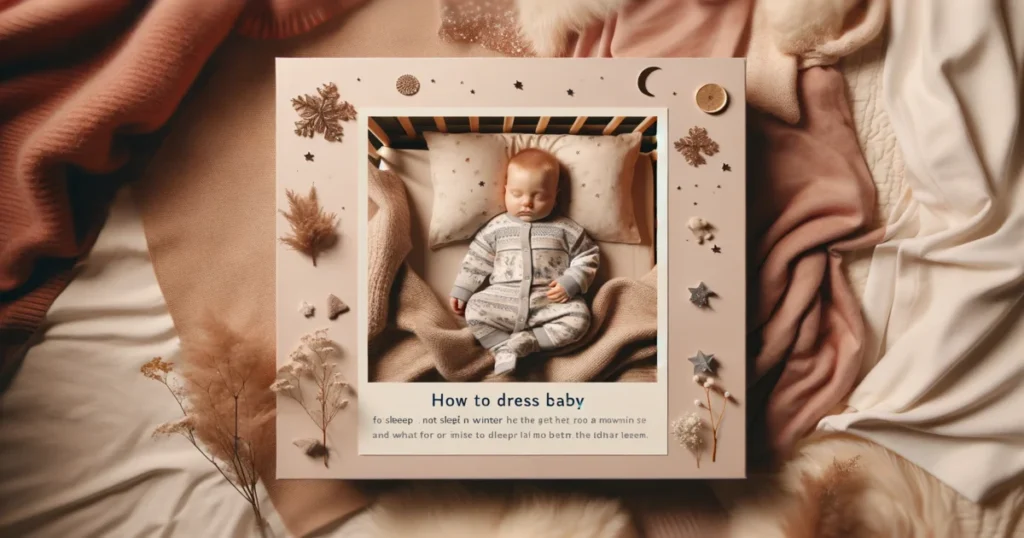Introduction of How to Potty Train a Boy:
If you’re starting the journey of potty training your boy, this simple guide is here to help you. Potty training is a big step for little ones, and it can be filled with challenges. This article offers simple, practical tips on how to potty train a boy, ensuring the process is as smooth and positive as possible. Whether you’re just beginning or looking for new strategies, you’ll find helpful advice to guide you and your child through this important milestone.

Understanding the Right Age to Start:
Figuring out when and how to potty train a boy is crucial. While the average age to start is around 18 to 24 months, every child is unique. It’s essential to start when your child shows signs of readiness rather than strictly adhering to a specific age. These signs include being able to follow simple instructions, showing curiosity about the bathroom, and discomfort with wet or soiled diapers.
Tip: Look for signs of readiness in your child, such as staying dry for longer periods, showing interest in the bathroom, or disliking wet diapers.
Creating a Positive Environment:
The environment in which you potty train your boy can significantly impact his success. It’s important to create a supportive, encouraging, and stress-free atmosphere. This environment helps your child feel comfortable and relaxed during the process, reducing pressure and anxiety that can often accompany potty training.
Tip: Use positive reinforcement like praise and small rewards to encourage your child each step of the way.
Choosing the Right Equipment:
Selecting appropriate potty training equipment can make the process more appealing to your boy. A child-friendly potty or a special seat for the regular toilet can make him feel more secure and in control. Some boys might be excited by a potty that features a favorite character or color, enhancing their willingness to use it.
Tip: Let your child pick out their own potty or toilet seat to increase their interest and engagement in the process.
Establishing a Routine for How to Potty Train a Boy:
Consistency is key in potty training. Developing a routine helps your child understand what to expect and when. It can be as simple as taking him to the potty at regular intervals, especially after meals or before bedtime, and gradually increasing the time between visits as he gets more comfortable.
Tip: Set regular intervals to take your child to the potty, especially after meals or before bedtime.
Dressing for Success:
The type of clothing your child wears during potty training can affect his ability to use the potty successfully. Clothes that are easy to remove can reduce frustration and make it easier for your boy to get to the potty in time, especially when he’s just starting to learn the signals his body sends when it’s time to go.
Tip: Choose pants with elastic waists or easily removable clothing to facilitate quick bathroom trips.
Handling Accidents Calmly:
Accidents are an inevitable part of the potty training process. How you respond to these accidents can greatly influence your child’s attitude toward potty training. Keeping calm and responding gently reassures your child that accidents are normal and part of the learning process, helping him to not feel ashamed or discouraged.
Tip: When accidents happen, reassure your child that it’s okay and gently remind them to use the potty next time.
Involving Your Child in the Process:
Involving your boy in the entire potty training process can boost his enthusiasm and sense of independence. Letting him participate in activities like choosing his potty, decorating it, or even picking out his new underwear can make him feel more invested in the process.
Tip: Encourage your child to participate in the process, like flushing the toilet and washing hands, to make them feel more involved.
Nighttime Training Tips:
Nighttime potty training is often a separate and longer process than daytime training. It requires patience as it depends on your child’s physiological development. Preparing for nighttime training involves looking for signs that your child is staying dry through naps or for longer periods at night. It’s also about setting the right expectations and being prepared for accidents.
Tip: Use waterproof mattress covers and consider nighttime training pants to manage accidents without frustration.
Dealing with Resistance or Fear:
It’s common for children to show resistance or fear during potty training. This could be due to a variety of reasons, such as fear of the unknown, a bad experience, or just not being ready. Understanding and gently addressing these fears or resistance can help ease your child into how to potty train a boy process.
Tip: If your child resists, take a break for a few days. Try to understand if there’s a specific reason for their resistance and address it gently.
Celebrating Milestones:
Celebrating even the smallest successes can have a big impact on your child’s potty training journey. It’s not just about the end goal of being fully potty trained but also about acknowledging the effort and progress along the way. This recognition can motivate your child and make the experience positive.
Tip: Celebrate successes with clapping, a happy dance, or a small reward to make your child feel proud of their achievement.

Table: How to Potty Train a Boy Milestones and Tips
This table provides a helpful overview of key potty training milestones for how to potty train a boy, along with corresponding tips to aid parents during the training process. It’s organized to give you a clear picture of what to expect at each stage and how to effectively support your child’s journey toward becoming fully potty trained.
| Milestone | Description | Tips |
|---|---|---|
| Initial Introduction | Introducing your boy to the concept of potty training. | Show him the potty, explain its use, and let him explore it. |
| First Attempt | Encouraging your boy to use the potty for the first time. | Make it a fun and relaxed experience, with lots of encouragement. |
| Regular Routine | Establishing a regular routine for potty visits. | Set consistent times for potty breaks, especially after meals and before bedtime. |
| Independent Use | When your boy starts to use the potty independently. | Praise his efforts and provide gentle reminders for regular potty visits. |
| Dry Days | Days when your boy stays dry throughout the day. | Acknowledge and celebrate these days as significant achievements. |
| Night Training | Transitioning to staying dry through the night. | Be patient and prepared for accidents; use waterproof covers if needed. |
| Fully Potty Trained | Your boy no longer needs diapers and uses the potty consistently. | Celebrate this big milestone with a special reward or acknowledgment. |
This table serves as a guide to help you and your boy for how to potty train a boy process. Remember, each child is unique, and these milestones may occur at different times for different children.
Facts and Figures:
When it comes to understanding how to potty train a boy, knowing some key facts and figures can be incredibly helpful:
- Boys typically take a bit longer to become fully potty trained compared to girls, often due to developmental differences.
- Most boys start showing readiness for potty training between 18 and 24 months, but some may not be ready until they are closer to 3 years old.
- Consistency and positive reinforcement are key factors in successfully potty training boys, as supported by various child development studies.
FAQs for How to Potty Train a Boy:
Q: How long does it usually take to potty train a boy?
The time it takes to potty train a boy varies. On average, it can take several months to a year for a boy to be fully potty trained. Remember, every child is different, so it’s important to be patient and follow their pace.
Q: What are the signs that my boy is ready to start potty training?
Signs of readiness include being able to follow simple instructions, showing curiosity about the toilet, staying dry for longer periods, and disliking wet or dirty diapers.
Q: How can I make potty training more appealing to my boy?
You can make potty training more appealing by using fun and colorful potty seats, giving small rewards for successes, and turning the process into a game to keep it engaging.
Final Thoughts on How to Potty Train a Boy:
Mastering how to potty train a boy is a significant milestone in both your child’s development and your journey as a parent. It requires patience, consistency, and a positive approach. Each boy is unique, so it’s crucial to tailor the potty training process to fit his individual needs and readiness. Celebrate the small victories along the way, and remember that setbacks are just part of the learning process. With time, encouragement, and the right strategies, your boy will successfully transition out of diapers and into this new stage of independence.

Important Points:
- Be patient and start potty training when your boy shows signs of readiness.
- Create a fun and positive potty training environment to keep your boy motivated.
- Use consistent routines and positive reinforcement to encourage success.
- Understand that accidents are normal and part of the learning process.
- Celebrate each milestone to boost confidence and mark progress in potty training.
Want to learn more about Parenting? Click here to read our easy tips on our blog!
- Ideal 5 Month Old Sleep Schedule : A Daily Routine for Your Baby
- What Age Can Kids Stay Home Alone: A Parent’s Safety Checklist
- How to Stop Yelling at Your Kids : 10 Peaceful Parenting Strategies
- Strategies for Early Childhood Early Intervention: Tips for Parents
- Tips for Understanding and Managing Child Behavioral Problems


